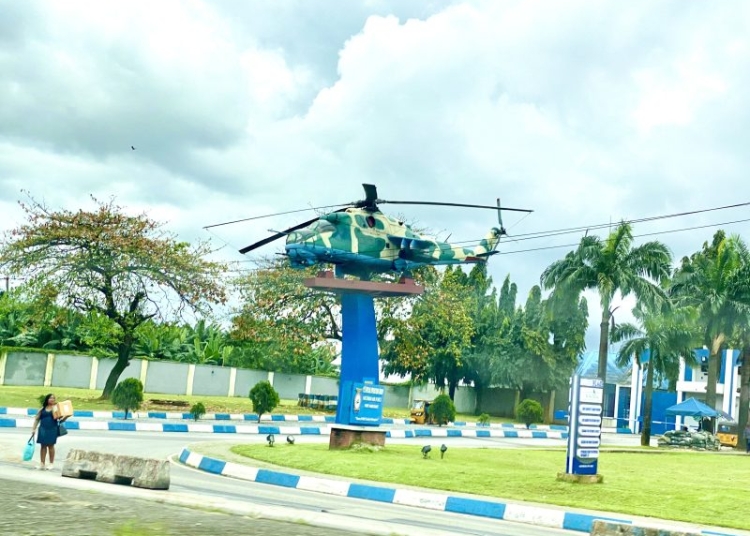In a strategic move to modernize its military capabilities, the Nigerian Air Force (NAF) has initiated the retirement process for its aging Russian-made Mil Mi-24V/P attack helicopters. The transition marks a significant step towards upgrading the NAF’s aerial arsenal to meet evolving security challenges.
Among the retired helicopters, one Mi-24V/P (NAF 537) has been preserved as a gate guard at the 115 Special Operations Group airbase in Port Harcourt, Rivers state, serving as a testament to the NAF’s commitment to staying at the forefront of military technology.
The NAF currently operates a fleet comprising approximately seven Mil Mi-24V/P ‘Hind-E/F’ and 17 Mi-35M/P ‘Hind-E/F’ gunships. These helicopters, known as SkyHawks within the NAF, have been instrumental in various operations, supporting troops and safeguarding national security.


According to records from the United Nations Register of Conventional Arms, Ukraine supplied three unspecified Mi-24 helicopters to Nigeria in 2008, followed by two Mi-24Vs in 2014. Additionally, in 2010, Belarus exported two unspecified Mi-24s to Nigeria. The Mi-24V/P variant, while less advanced than the Mi-35M, still boasts formidable capabilities.
One incident, in particular, showcased the durability of these helicopters. NAF 260, a Mi-24V attack helicopter, sustained damage to one of its main rotor blades during an operation. Remarkably, the skilled pilot safely returned the helicopter to base, where it was promptly repaired and returned to service.
Over the years, the NAF expanded its capabilities with the acquisition of six Mi-35P attack helicopters in 2000. Later, in 2008, the NAF received a mix of Mi-35P and Mi-24V attack helicopters from Ukraine, discreetly boosting its fleet’s strength.
The Mi-24V/Mi-35P helicopters operate primarily within the 97 & 115 Special Operations Group (SOG), playing a crucial role in supporting NAF operations across the nation. Since the delivery of the Mi-35M gunship in December 2016, it has become an indispensable asset, aiding in escort missions, quick responses, and close air support, particularly in the Northeast and Lake Chad Basin.
A total of five MI-35M gunships have been delivered and inducted into the Nigerian Air Force. But one of the aircraft crashed in January 2019 while providing close air support for troops of 145 Battalion in Damasak. Five servicemen on board the MI-35M died in the mishap
Despite the advantages offered by the Mi-24V and Mi-35P ‘Hind’ helicopters, the NAF recognizes the need for modernization in the face of evolving threats and technological advancements. To this end, it is considering several options for the future of its aerial fleet.
One potential avenue involves acquiring advanced helicopters like the Russian Mil Mi-35M, American Bell AH-1Z Viper, and the Turkish-made TAI T-129 ATAK helicopter. These modern platforms offer advanced sensors and weapons systems, providing the NAF with a distinct edge on the battlefield.
In addition to new acquisitions, the NAF is investing in pilot training programs to ensure that its aviators possess the skills and expertise required to operate these cutting-edge aircraft. Collaborations with other nations and organizations for specialized training form a key component of this strategy.
In summary, the Nigerian Air Force’s decision to retire older attack helicopters reflects its commitment to maintaining a modern and capable fleet. As the NAF looks toward the future, it seeks to enhance its capabilities, protect its citizens, and secure its national interests effectively. The retirement of the older helicopters signifies a bold step toward achieving these objectives in an ever-evolving security landscape.




